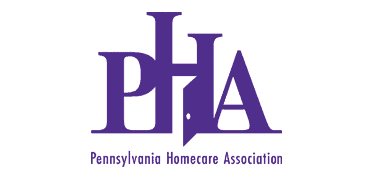By Lee Horner, CEO, Synzi
Chronic wounds are a common problem in elderly patients and they require frequent, regular monitoring to maximize wound healing. Once a patient develops a wound, healing can be complicated by many comorbid conditions such as diabetes and cardiovascular disease. According to a study published in Wound Management and Prevention, approximately 5 million chronically ill patients have wounds; the aggregate cost of their care has been documented at more than $20 billion annually.
Burden of Care on Home Health Agencies
Given the aging population and rise in chronic conditions, the growing incidence of acute and chronic wounds has placed a great burden of care on home health agencies. In situations where wounds do not heal properly or in a timely manner, Nurses, LPNs, and Clinical Supervisors may need to make more visits per episode of care and wound care specialists may be needed on-hand. Making more home visits can have a negative impact on an agency’s bottom line:
- This reduces an agency’s ability to grow revenue by taking on more patients.
- Non-healing wounds can lower an agency’s quality ratings and lead to penalties levied by regulatory agencies.
- Penalties can thwart new patient sign-ups and referrals, ultimately affecting the bottom line.
- Unfortunately, many home health agencies do not always have a wound care specialist readily available – or even on staff. Some home health agencies might not accept a wound care case as a result. And, many agencies lack in-house wound knowledge—the result of a shortage of wound experts across all categories of health care providers. In the United States, there is only 1 wound nurse for every 500 patients diagnosed with acute or chronic wounds.
Role of Virtual Care in Enhancing Wound Care
Virtual care and telehealth can provide clinically efficient and effective wound care post-surgery or post-hospital discharge by preventing infections, unnecessary emergency room visits, and hospital readmissions according to a study published by HIMSS. Home health agencies can use technology to engage wound care specialists in order to immediately provide remote advice to those in the field during a visit. The platform helps patients (with or without a home health nurse) connect with a specialist (such as a wound certified nurse) who can provide more timely care and guidance in wound management. There’s no need for a specialist (and even the visiting nurse) to make a special trip to the patient, therefore significantly reducing costs of specialized care.
During chronic wound consultations, specialists can support home health nurses with proper diagnoses and evaluations for patients with chronic wounds. This allows wound care specialists to immediately provide remote advice to those in the field. The virtual visits also enable visiting nurses to enhance their wound care skills and knowledge of wound care management. Effective wound care management workflows can be established and ensure agency compliance with wound care best practices.
Costs associated with the specialists’ transportation – or even the patient’s transfer and/or readmission – are minimized. Productivity is maximized as one wound care specialist can provide guidance virtually to all caregivers in the field. This is especially important in rural areas which means that nurses and specialists can spend a lot of time driving – instead of being able to see and treat patients. Moreover, connecting a home health nurse with a wound certified nurse is beneficial in bridging the gap between education and wound assessment. As one of our customers pointed out, virtual visits facilitate “a successful start of care and initial assessment between the RN at patient’s home and the WCN… and virtual visits aid in the reduction of secondary and tertiary visits by the WCN.”
The use of video technology also helps ensure the quality of the care. One of our partners praised the efficiency and effectiveness of Synzi’s video and shared that “a lot of time is spent looking at pictures and the quality of the pictures is poor. Plus, it takes a while for the WCN to get the picture via email. The ability to see the wound live/virtually via Synzi is a good as being in person.” With a virtual care communication platform, home health agencies can help their patients receive more expedient evaluation and assessment by clinicians with specialized wound care training.

